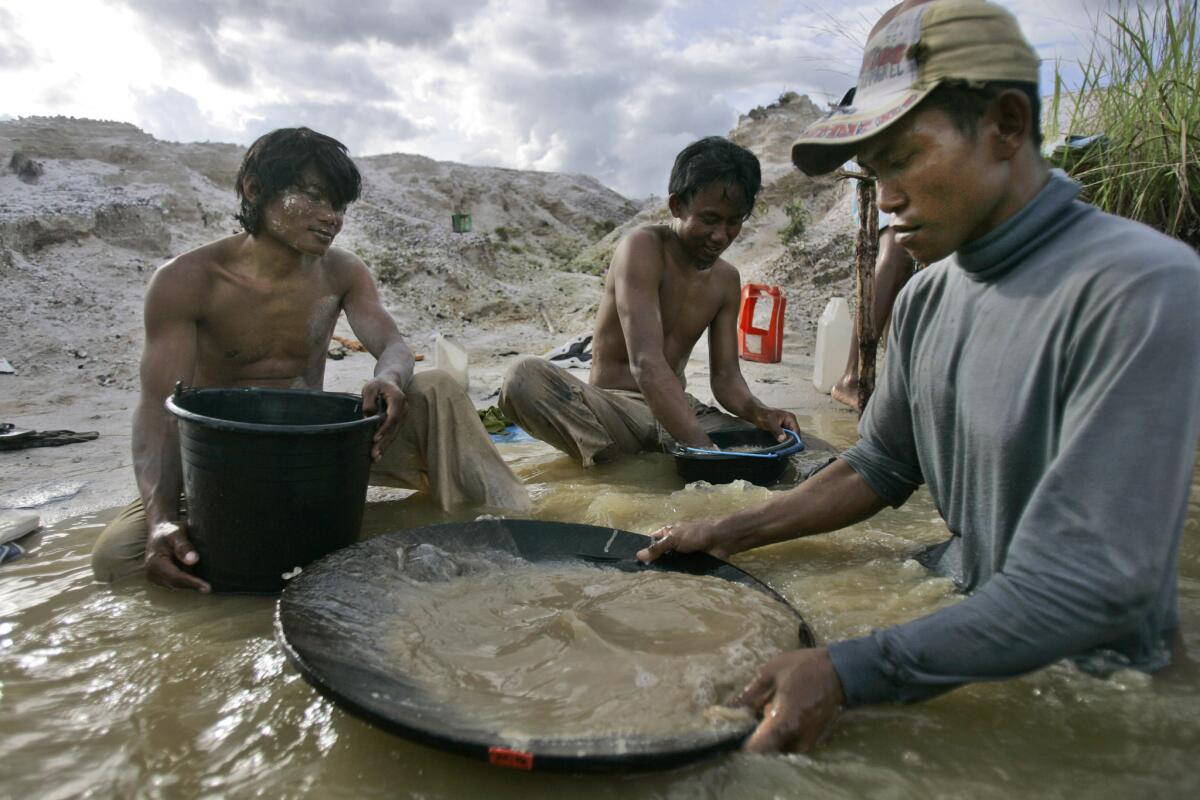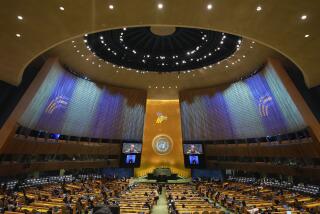Big deal, little fanfare over global pact on mercury controls

- Share via
It’s a highly toxic element that travels the world in mysterious ways, respects neither manmade nor natural boundaries and rapidly accumulates in people and the food they eat.
Mercury’s risks for human and environmental health have slowly but steadily come to light over the centuries, leading to ad hoc phase-outs of mercury-filled thermometers, dental amalgam and the felt-hat-shaping compound that caused brain damage in 19th century milliners, giving rise to the term “mad as a hatter.”
U.S. and European governments have invoked strict regulations in recent decades to reduce mercury emissions. But fresh research by the United Nations Environmental Program and U.S. and European scientists has documented a concurrent rise in mercury emissions in Asia, Africa and the Arctic Ocean region, underscoring that mercury is a global problem in need of a collaborative solution.
A legally binding agreement to reduce emissions that was reached this past weekend at U.N.-sponsored talks in Geneva drew little notice or fanfare, probably because it still faces the rigors of ratification in 140-plus countries that will take another two to four years.
Still, getting so many states with competing economic agendas and disparate means to commit to the plan was no small feat--and not a minute too soon, in the view of environmental advocates spooked by mounting evidence of mercury’s dangers.
A European Union-coordinated study of 4,000 residents in 17 countries over the last two years found mercury levels in one-third of the test group to be above the amount considered safe, suggesting a causal link with brain damage in newborns.
“Mercury has been known as a toxin and a hazard for centuries, but today we have many of the alternative technologies and processes needed to reduce the risks for tens of millions of people, including pregnant mothers and their babies,” said Achim Steiner, the U.N. Environment Program chief, in heralding the successful conclusion of the decade-long International Negotiating Committee on Mercury.
Studies released by the U.N. agency ahead of the culminating negotiations lent urgency to the forum’s mission. In the world body’s “Global Mercury Assessment 2013,” emissions of toxic metals from artisanal gold mining were shown to have doubled since 2005. Researchers attributed some of the rise to more thorough reporting from developing nations, but blamed more of it on the lure of record prices commanded for the precious metal.
A separate U.N. study said coal burning was responsible for about 24% of mercury emissions globally each year, with a heavy concentration in Asia, where smokestacks lack the emissions-scrubbing equipment widely used in North America and Europe.
Franz Perrez, international affairs division chief for Switzerland’s environmental office, attributed the unusual unity of purpose that secured the mercury pact in Geneva to a forum less subject to the rich-poor divides bedeviling the world body’s pursuit of a climate change treaty.
“There are some differences over financing and burden-sharing and over the compliance mechanism, but these are typical,” said Perrez, adding that he heard nothing to suggest ratification would be a problem.
Horse-trading remains to be done on helping developing countries switch to technologies that capture mercury emissions at the source and phase out antiquated and dangerous mining practices, said Noelle Selin, a professor of engineering systems and atmospheric chemistry at the Massachusetts Institute of Technology.
Mercury controls have been practiced on a voluntary basis by leading industrial countries in recent years, but “the advantage of having a treaty is that it is a strong legal statement that mercury is a problem and sets guidelines and timelines for reducing its major sources,” Selin said in a phone interview from the Geneva forum.
Selin and Harvard University colleague Elsie Sunderland published an appeal in the journal Environmental Health this month for aggressive emissions reductions and pointed to the European Union study showing as many as 2 million children born on the Continent each year with mercury-induced IQ deficiencies. The study calculated that the mental health damage costs European society $12 billion a year in lost income.
How mercury that has accumulated in the environment for millennia migrates the globe and transforms as it mixes with air, soil and water isn’t well understood, said James Hurley, director of the University of Wisconsin Aquatic Sciences Center. But an experiment he conducted over the last seven years found that new emissions from industrial activities and mercury released from melting Arctic ice and thawing permafrost were far more hazardous to the food chain than deposits in the ground.
Mercury released from coal-fired plants that falls into lakes or watersheds converts to methylmercury in water and is absorbed first by plankton, then by the fish that feed on it. To determine how quickly the element enters the food chain, Hurley put about three times the amount of mercury into one of Canada’s Experimental Lakes as would naturally make its way into the water body from rainfall and adjacent wetlands.
“We got a rapid response to new mercury added to the lake,” Hurley said. “More and more of the stable isotope kept accumulating in predator fish.”
Even more significant, he said, was the finding that as soon as researchers ceased adding mercury to the lake, absorption of it in fish responded with a parallel decline.
“By eliminating the amount of mercury in the atmosphere, we hopefully will be seeing improvement in mercury levels in fish,” Hurley said, predicting what passes for rapid rewards in environmental recovery if the global compact on mercury regulations moves ahead.
A foreign correspondent for 25 years, Carol J. Williams traveled to and reported from more than 80 countries in Europe, Asia, the Middle East and Latin America.
ALSO:
Iran’s subtle, persistent voice for environmentalism
U.S. gas bonanza from fracking slow to spread globally
China pledges to curb auto emissions, reduce air pollution
More to Read
Sign up for Essential California
The most important California stories and recommendations in your inbox every morning.
You may occasionally receive promotional content from the Los Angeles Times.











